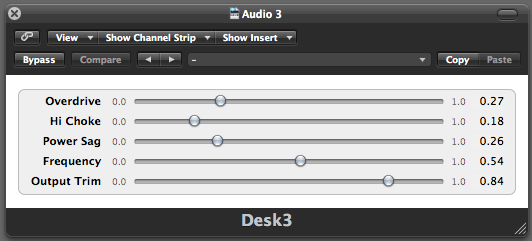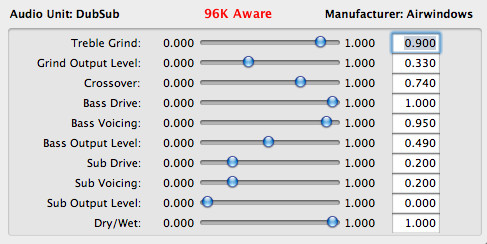Desk3
Desk3Demo is a universal binary AU plugin that takes the original ‘Desk’ plugins to a new level! Unique modes of analog overload give the ultimate dial-a-warm. The ultimate Airwindows saturation yet, and 96K ready!
Desk3 works really well as two things- as a ‘generic analog console sound’ with a really slick fat overdrive that can run 96K where BussColors can’t, and as a ‘internal mixer stage’. If you wanted to take BussColors (which already imitates a large format analog console exactly) and say, now let us model the wiring harness or longer mic cables or lower the power to the whole console, Desk3 is capable of making those kinds of adjustments, either on the 2-buss or on individual channels or busses (including busses you weren’t including BussColors instances on).
The Overdrive control is what you’d think it is, but Airwindows style—articulate and fluid beyond what most software can do, thanks to the very latest generation of anti-aliasing algorithms. Push it to see what the tone is, then dial it back to use as a subtle enhancement. There is no ‘clip point’ to it, it’s one continuous curve whatever the setting, so don’t go too saturated by mistake expecting to hear a clipping edge appear—it won’t!
The Hi Choke control is unique to Desk3. Go ahead and push it, but you’ll be happiest if you keep this one subtle too. It breaks up in a really unusual way that might be good on snares, but it too is best used as a subtle tone shaper, as the original Desk plugins used it. It’s just that now you can abuse it if you wanted.
Power Sag has two controls, Power Sag and Frequency. You can crank Power Sag to the max to hear where it’s hitting, but then back it off to add dimension and articulation to your sounds in many interesting ways. It basically acts like an analog power supply crapping out, but over a range broader than you’d ever see in real analog gear. Very low values give the SSL haze, very high values do things to the bass. Experimenting is the key here, and you can always keep it extreme if you hit on something that really works :)
Desk3 is $50.


